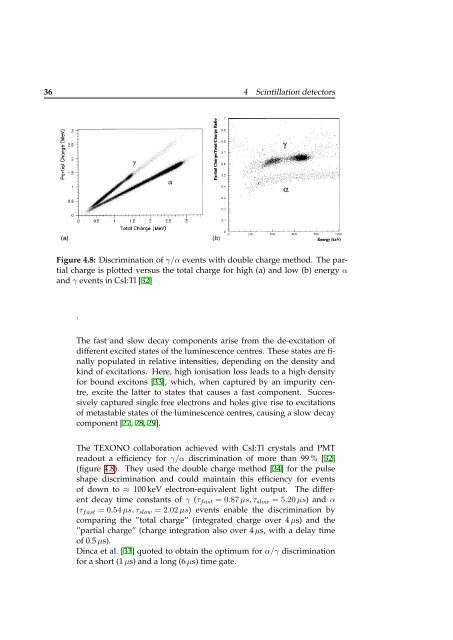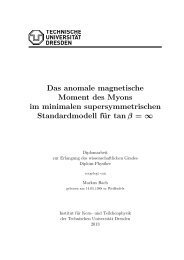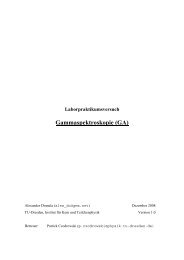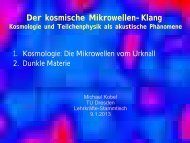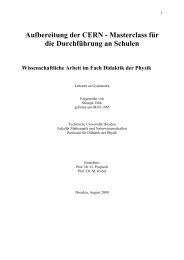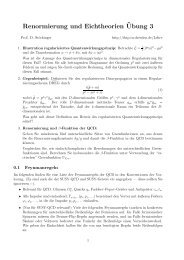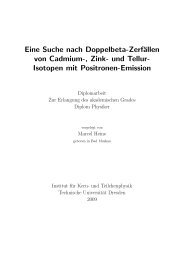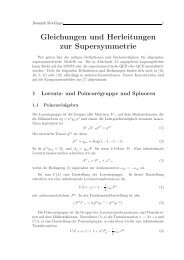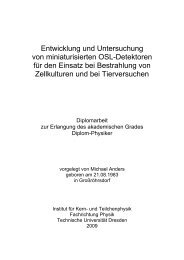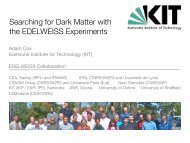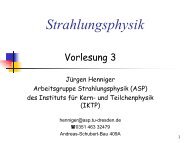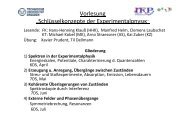a design study for a cobra upgrade to - Institut für Kern- und ...
a design study for a cobra upgrade to - Institut für Kern- und ...
a design study for a cobra upgrade to - Institut für Kern- und ...
You also want an ePaper? Increase the reach of your titles
YUMPU automatically turns print PDFs into web optimized ePapers that Google loves.
36 4 Scintillation detec<strong>to</strong>rs<br />
Figure 4.8: Discrimination of γ/α events with double charge method. The partial<br />
charge is plotted versus the <strong>to</strong>tal charge <strong>for</strong> high (a) and low (b) energy α<br />
and γ events in CsI:Tl [32]<br />
.<br />
The fast and slow decay components arise from the de-excitation of<br />
different excited states of the luminescence centres. These states are finally<br />
populated in relative intensities, depending on the density and<br />
kind of excitations. Here, high ionisation loss leads <strong>to</strong> a high density<br />
<strong>for</strong> bo<strong>und</strong> exci<strong>to</strong>ns [33], which, when captured by an impurity centre,<br />
excite the latter <strong>to</strong> states that causes a fast component. Successively<br />
captured single free electrons and holes give rise <strong>to</strong> excitations<br />
of metastable states of the luminescence centres, causing a slow decay<br />
component [27, 28, 29].<br />
The TEXONO collaboration achieved with CsI:Tl crystals and PMT<br />
readout a efficiency <strong>for</strong> γ/α discrimination of more than 99 % [32]<br />
(figure 4.8). They used the double charge method [34] <strong>for</strong> the pulse<br />
shape discrimination and could maintain this efficiency <strong>for</strong> events<br />
of down <strong>to</strong> ≈ 100 keV electron-equivalent light output. The different<br />
decay time constants of γ (τfast = 0.87 µs, τslow = 5.20 µs) and α<br />
(τfast = 0.54 µs, τslow = 2.02 µs) events enable the discrimination by<br />
comparing the ”<strong>to</strong>tal charge” (integrated charge over 4 µs) and the<br />
”partial charge” (charge integration also over 4 µs, with a delay time<br />
of 0.5 µs).<br />
Dinca et al. [33] quoted <strong>to</strong> obtain the optimum <strong>for</strong> α/γ discrimination<br />
<strong>for</strong> a short (1 µs) and a long (6 µs) time gate.


